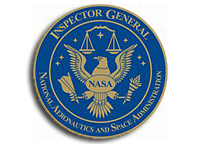NASA OIG Dings NASA Security Yet Again

NASA OIG: NASA’s Security Management Practices
“While overall security policy and oversight are managed by OPS at the Agency level, implementation and funding of protective services operations remains a responsibility of Center leadership who used their resources to pursue Center- based priorities. As a result, OPS authority is marginalized and Centers, at times, develop and implement strategies that conflict with the intent of Agency directives. As part of MAP, OPS was to assume funding and day-to-day operational responsibility for protective services across the Agency. However, in August 2019 NASA changed its plans to centralize management of the physical security portion of the Agency’s protective services operations and as of the time of this report the impact of this decision on the Agency’s overall approach to security management remains unclear. Despite our concerns that OPS was not well positioned to manage such a change because it currently lacks an organizational or governance structure to implement and oversee such enterprise-level responsibilities, we do believe several planned initiatives, if properly implemented, could leverage economies of scale and improve protective services operations.”







We see this so often that one wonders why they even bother.
And again…and again…and again…
The winds of change at NASA always seem to blow in opposite directions. One breaks up large service contracts into smaller and smaller segments; individual contracts may be collaborations of a dozen different companies, even when this duplicates management. Other forces combine small unrelated services into larger and larger contracts, such as agency wide services contracts, even when this combines centers with different needs and doesn’t provide any increased efficiency. Finally, even well run contracts end after a few years and are replaced with new ones, with enormous sums spent on preparing RFPs and writing contracts.
Small wonder SpaceX does everything inhouse.
In this case the IG has to first show that combining protective services contracts for different centers into a single massive structure provides any practical benefit. The additiwould likely more than compensateonal layers of bureaucracy and reduced responsiveness to local requirements may well eliminate any perceived improvement in efficiency.
NASA is one of the few federal agencies that it primarily dependent on a contractor work force for law enforcement/protective services functions (DOE also doe sis, Marshal’s Service does at court houses. State does for domestic security).